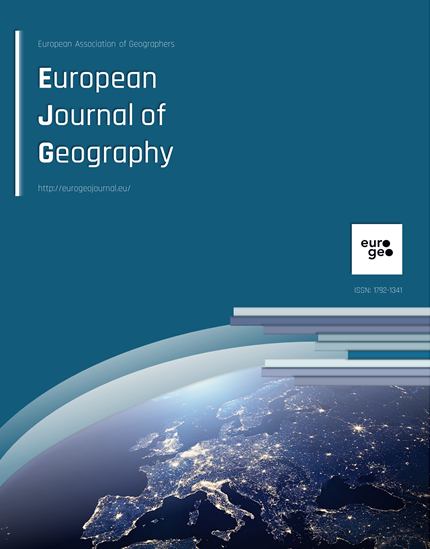ASSESSING THE TRIGGERING RAINFALL-INDUCED LANDSLIP EVENTS IN THE SHIVKHOLA WATERSHED OF DARJILING HIMALAYA, WEST BENGAL.

Published 2013-10-01
Keywords
- Shivkhola Watershed,
- Landslides,
- Critical rainfall,
- Return period,
- Antecedent rainfall
- Probability Model ...More
How to Cite
Copyright (c) 2023 Sujit MANDAL, Ramkrishna MAITI

This work is licensed under a Creative Commons Attribution 4.0 International License.
Abstract
Landslip events are triggered by the rainfall which causes a great damage to human lives and
properties worldwide. The present study, encompasses the relationship between rainfall and
landslide, the determination of the critical rain and its return period and the assessment of
temporal probability of rainfall that triggers landslip events. Landslide inventory statistics
were used to pertain the relationship between rainfall and landslip events. The continuous and
uniform rate of minimum amount of rainfall (approx. less than 80 mm/day) for few
consecutive days can cross the geomorphic threshold and can introduce slope instability in
the Study area of Shivkhola Watershed. The critical rainfall for two major landslide locations
i.e. Paglajhora and Tindharia were estimated incorporating geo-technical parameters such as
angle of internal friction (φ), slope angle (Ѳ), upslope contributing area (UCA),
transmissivity (T), wet soil density (ps), and density of water (pw). The return period of
critical rain at various recurrence intervals were being assessed. At Lower Paglajhora the
critical rainfall is 88.93mm which is less than the estimated rainfall of 90.54 mm/day at the
recurrence interval of 1.01 year with 99% probability. The temporal probability of the
landslide events were estimated applying Binomial and Poisson Probability Distribution
Model based on historical landslip events since 1968. The probability model suggests that
occurrences of major landslide events with more than 90 percent certainty could be expected
in every 7.5 years.
